It’s taken a while but I have discovered how to get a teenager out of bed before noon. You simply dangle the keys to Caterham Seven and he’ll be up early, breakfasted and ready for action. I’ve used this ploy twice now. First for a track day at Bedford Autodrome and now as we head out for a week-long adventure that will take us all over the country in search of seven of Britain’s best roads.
If you’re unfamiliar with the Caterham, it is just about the most basic sports car ever made. Essentially a continuation of the Lotus Seven which dates from 1957, it is the epitome of Colin Chapman’s “simplify and add lightness” philosophy. An engine, four wheels, two seats, and a steel spaceframe barely-clothed in aluminium panels. Since Caterham took over the blueprints in 1973 there have been a number of different powertrains provided by Vauxhall, Rover, Ford and even Suzuki, with the latest Super Seven reviewed here.

Our – well, my son Max would say ‘our’, I’m still coming to terms with the concept of sharing the Seven with him – 2010 Roadsport has a 1.6-litre Ford Sigma motor, with a few tweaks to send around 140bhp to the rear wheels. That may not sound much, but it weighs just 550kg. It wears sticky Avon CR500 tyres on 13-inch alloy wheels and will see sixty from a standstill in five seconds if you can manage the wheelspin.
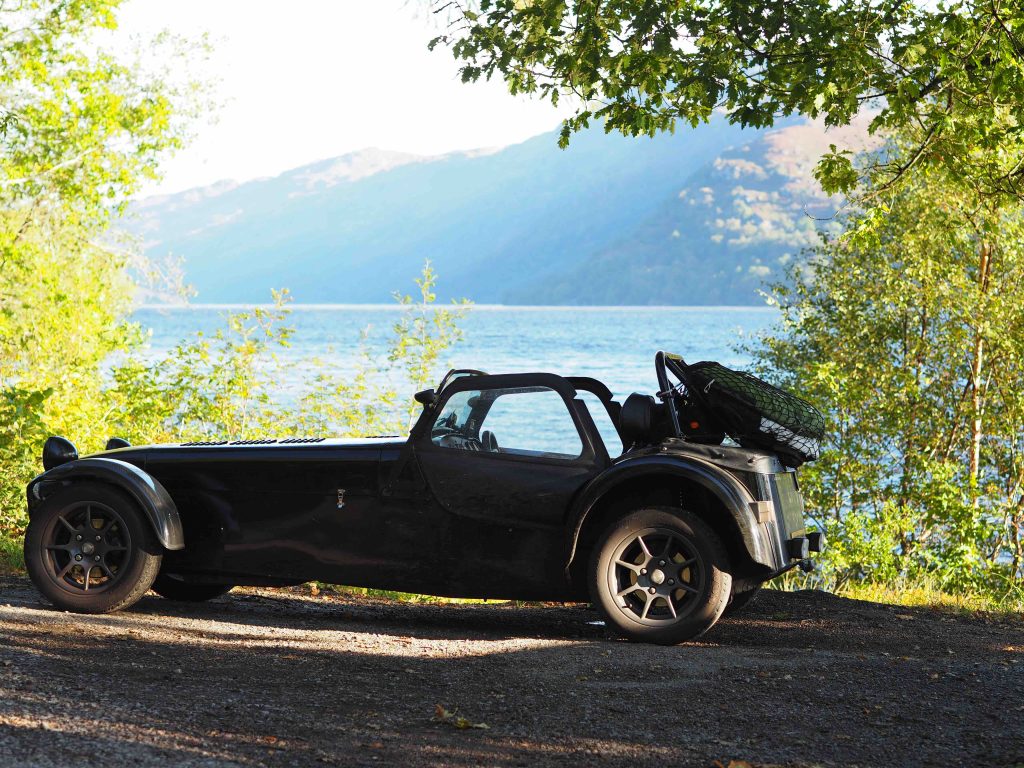
It is a trackday weapon and just the thing for a quick Sunday morning blast. What it is not is a grand tourer. Nonetheless that is what we’re asking of it as we go in search of Britain’s best roads and, with judicious use of bungee straps and the narrow slots behind the seats, we manage to pack everything we need for a week away, hoping to catch the last few days of summer and avoid the next wave of coronavirus.
We leave our home in London behind and breeze along with the sun shining, passing the monoliths of Stonehenge and make good time over the first 200 miles. What is immediately apparent is that any father-son bonding will not be done at speed. At least not if it involves conversation, anyway. On the way to the first road on our list, the A39 from Porlock to Barnstable in Devon, we communicate very little, yet Max’s phone remains in his pocket as the sights and sounds amazingly seem to provide sufficient teen entertainment.
The Atlantic Highway
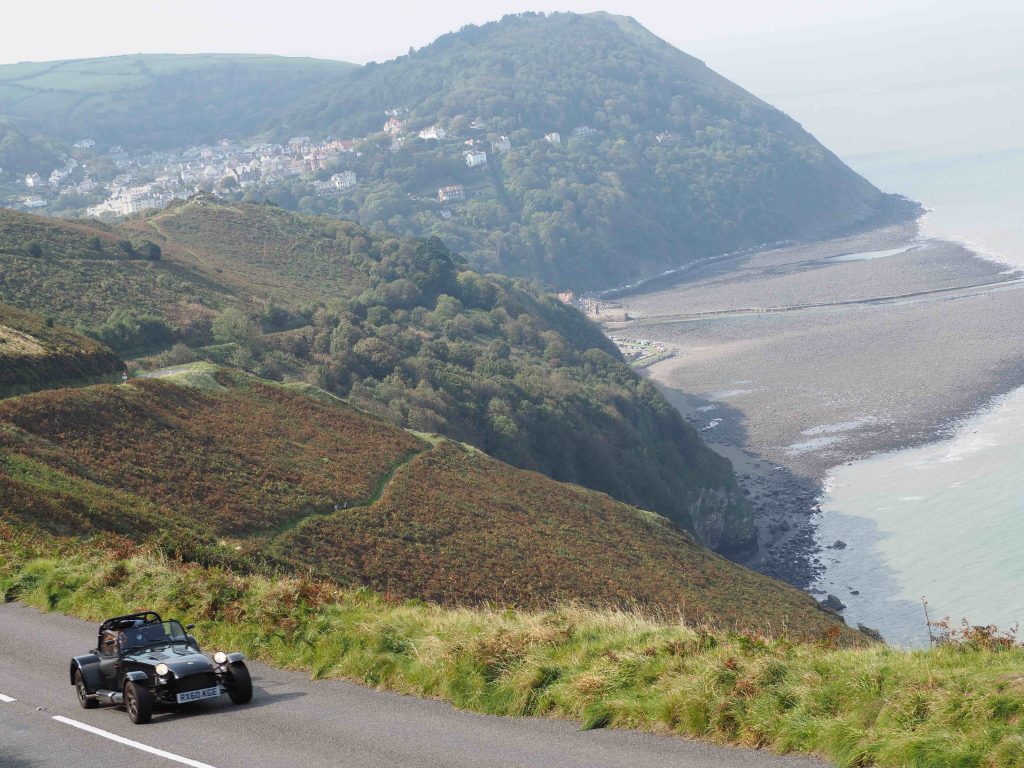
Known as the Atlantic Highway, the A39 is anything but a highway as it leaves Porlock. One of the steepest roads in the country, it snakes quickly up on to Exmoor in a series of hairpins. It would be fun if the path is clear but tedious if you’re behind one of the many caravans and motorhomes that are out for a final summer Sunday drive. Fortunately what the Seven loses in practicality it makes up in performance. A quick blip, a downshift and we’re doing multiple-motorhome fly-bys, one eye on the shift-up lights, one ear on the roar of the sidepipe that exits by the driver’s right hip.
Soon the road stretches out over Exmoor, undulating and weaving between the hills, yellow gorse and purple moorgrass providing a warm blur of colour through the windscreen. Dipping down off the moors and hugging the coast, the view across to the little seaside town of Lynton is stunning. As I scramble up a bank to grab some photos it’s Max’s first turn behind the wheel. A week ago he drove (and drove well) at a trackday, but there’s no run off here and barely a straight in sight to get familiar with the car.
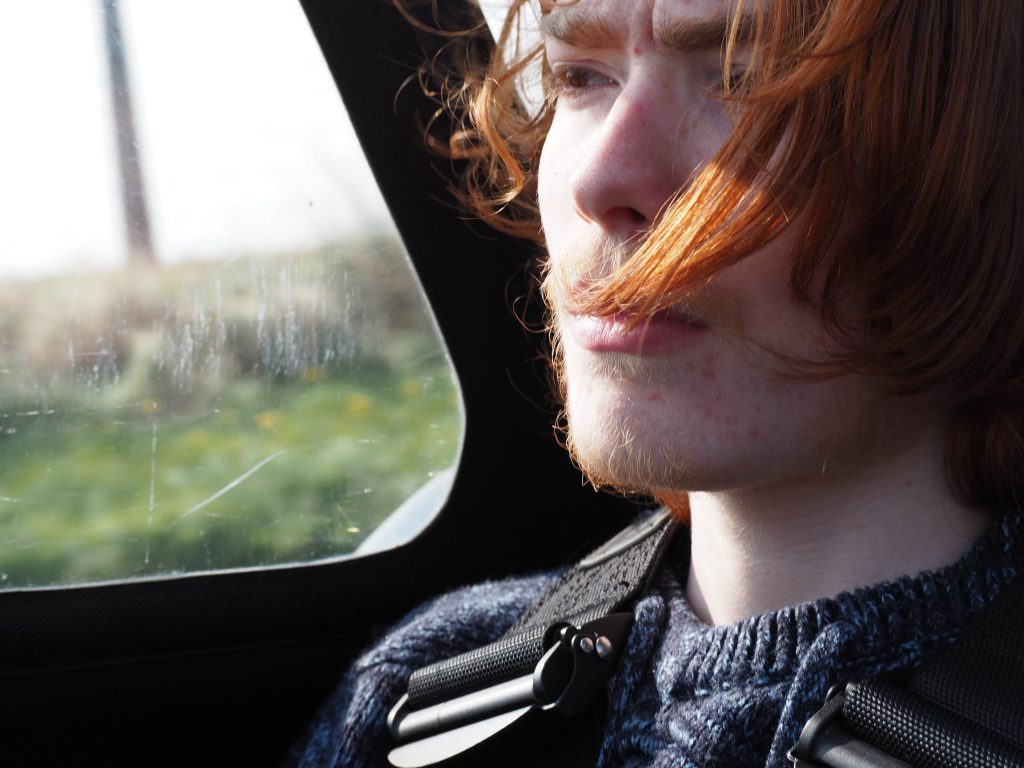
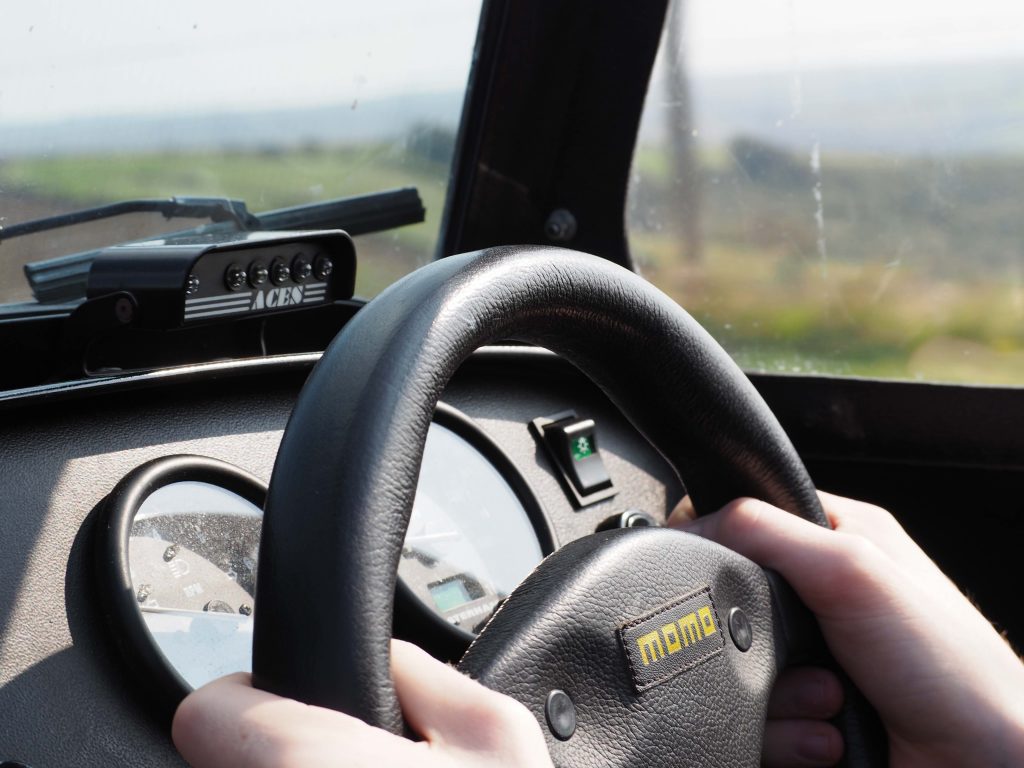
He clambers in, adjusts the four-point harness, thumbs the starter, and heads off down the hill to find somewhere to turn around and head back for a hero shot. He is gone a long time. I’m perched high on the hillside, with just my parental angst for company. It’s the first time he’s driven the Seven on the road, the first time I haven’t been sat next to him.
Just as I’m about to call him or check Find my iPhone I hear the car approaching. I’m guessing about 5,000 rpm, so not full throttle, which is a good sign. A better one is the ‘serious driving face’ I see through the viewfinder. He’s concentrating.
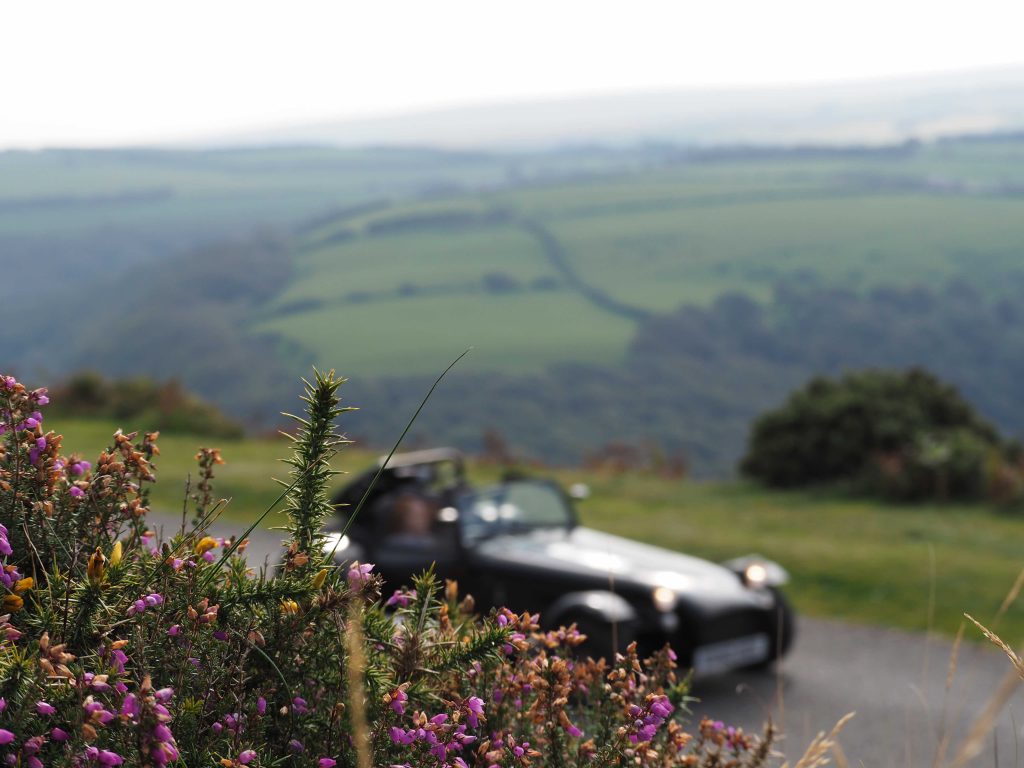
We get our shots and pause for a moment in a car park, watching as a gaggle of supercars sprint by in close formation. It’s definitely a popular spot.
A little too popular to be honest, and as we double back along the coast to make our way towards Wales there are more caravanists and sightseers on seemingly every straight.
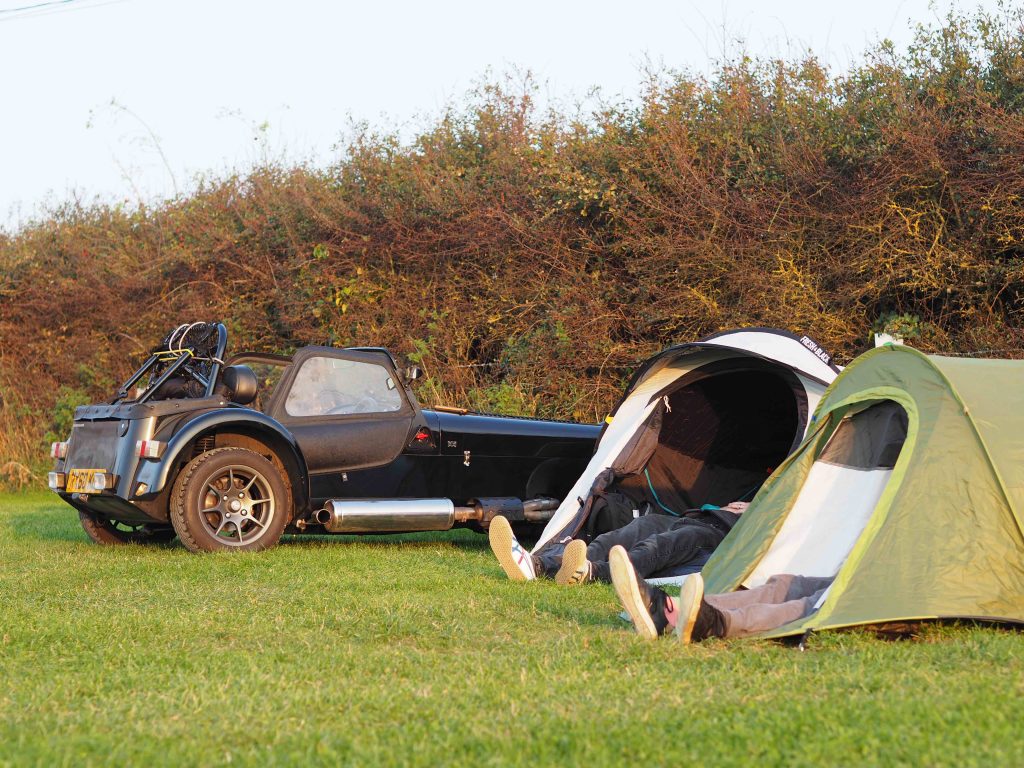
By the time we reach our campsite on the South Wales coast we’ve racked up 350 miles and we’re thankful for the pop-up tents that are ready to sleep in within seconds.
The Black Mountain Pass
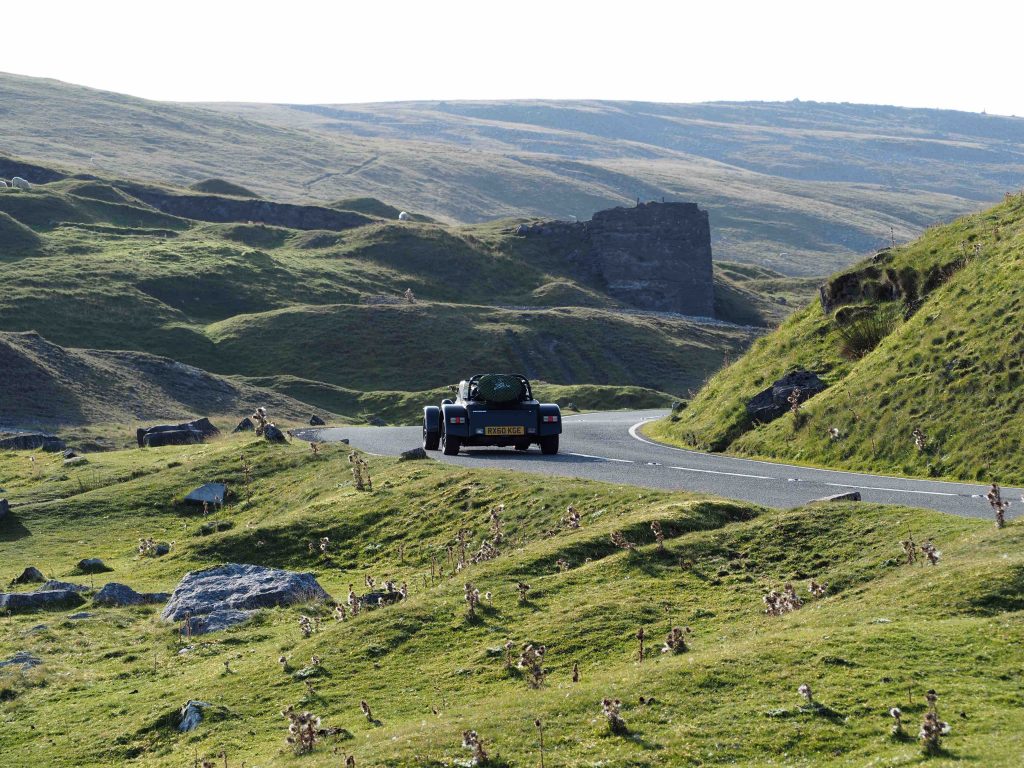
Day two begins with a short sprint on the M4 motorway to Swansea where we jink north to pick up the A4069 from Upper Brynamman to Llangadog—also known as the Black Mountain Pass. It’s still early so we have this stunning road to ourselves. A recent 40mph speed limit would reduce the fun in most cars, but the Seven sits so low to the ground that anything above a walking pace feels fast. The owners’ club magazine is called Low Flying, which is a pretty accurate description of piloting the Caterham as we whip between the mountains, taking curve after curve, trying not to be distracted by the views.
This really is one of Britain’s best roads. There are so many photo opportunities that Max gets most of the seat time, tearing up and down, getting more confident with each pass. There’s one particular corner that fans of Top Gear’s Chris Harris will recognise from his days as a YouTuber. It’s a tight left, uphill and there are plenty of tyre marks left by Harris and others who have powered through on opposite lock before us. At this point I elect to get back behind the wheel to take us north.
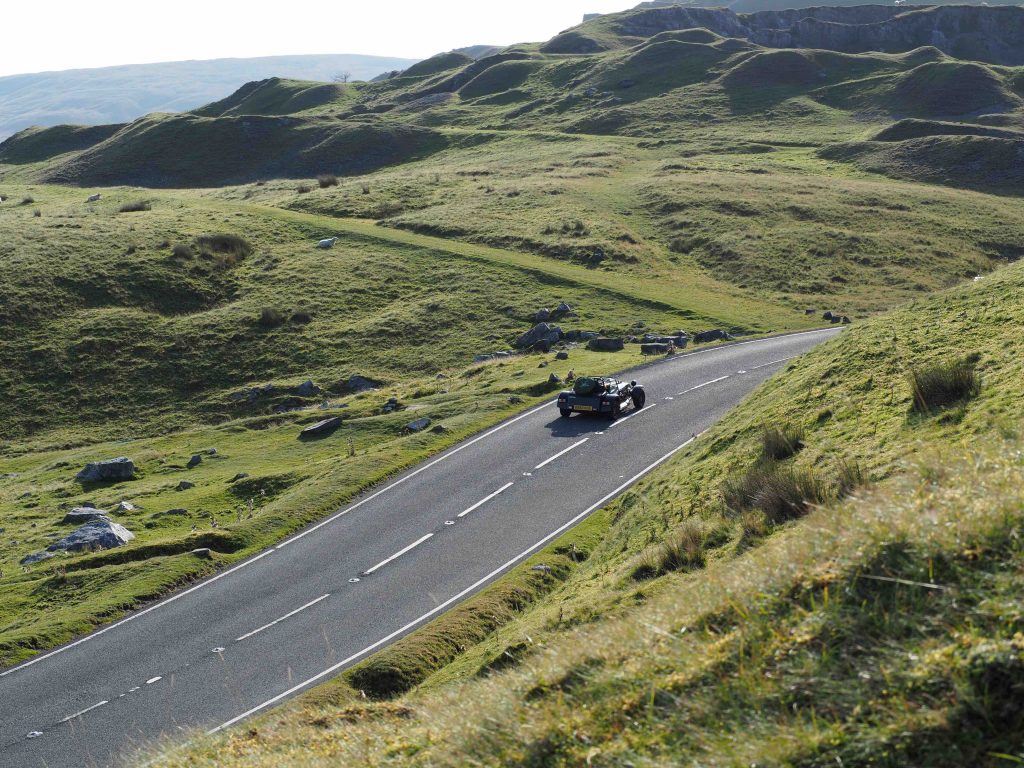
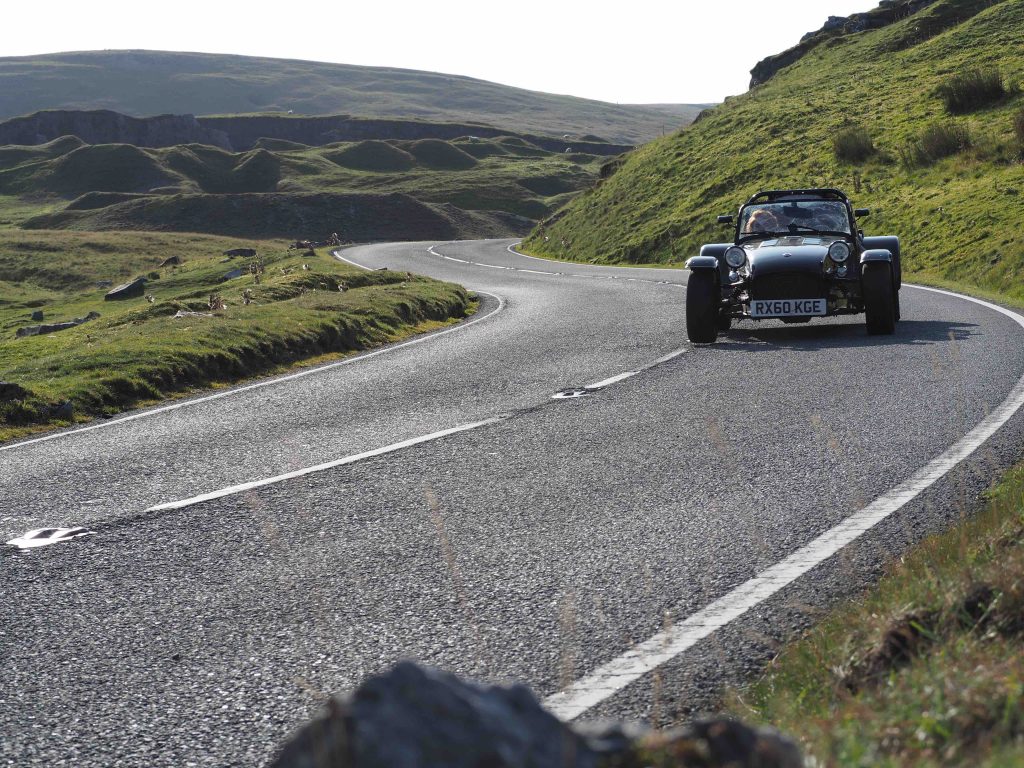
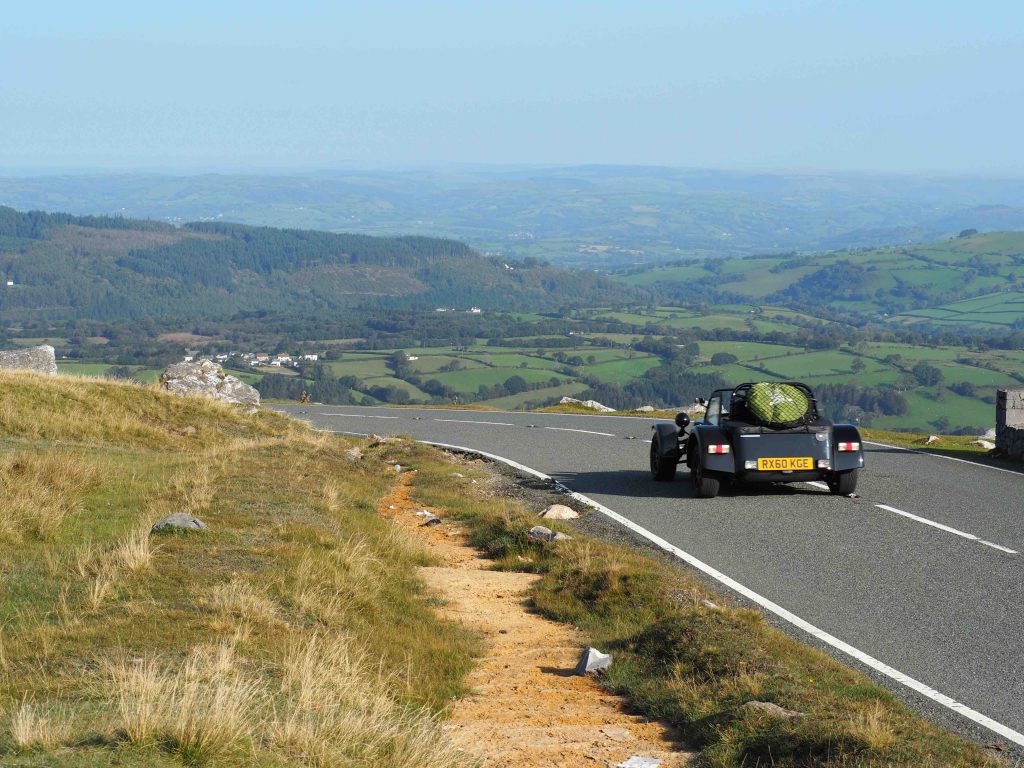
The A483 wasn’t on our list of Great British roads, but it is a fabulous way to cover the miles to Chester where we pick up the M63, M56, M60 and M67 motorways towards Manchester. Four hours or so from the Black Mountains and we’re at the A57 Snake Pass in time for a couple of runs before the sun sets.
Snake Pass
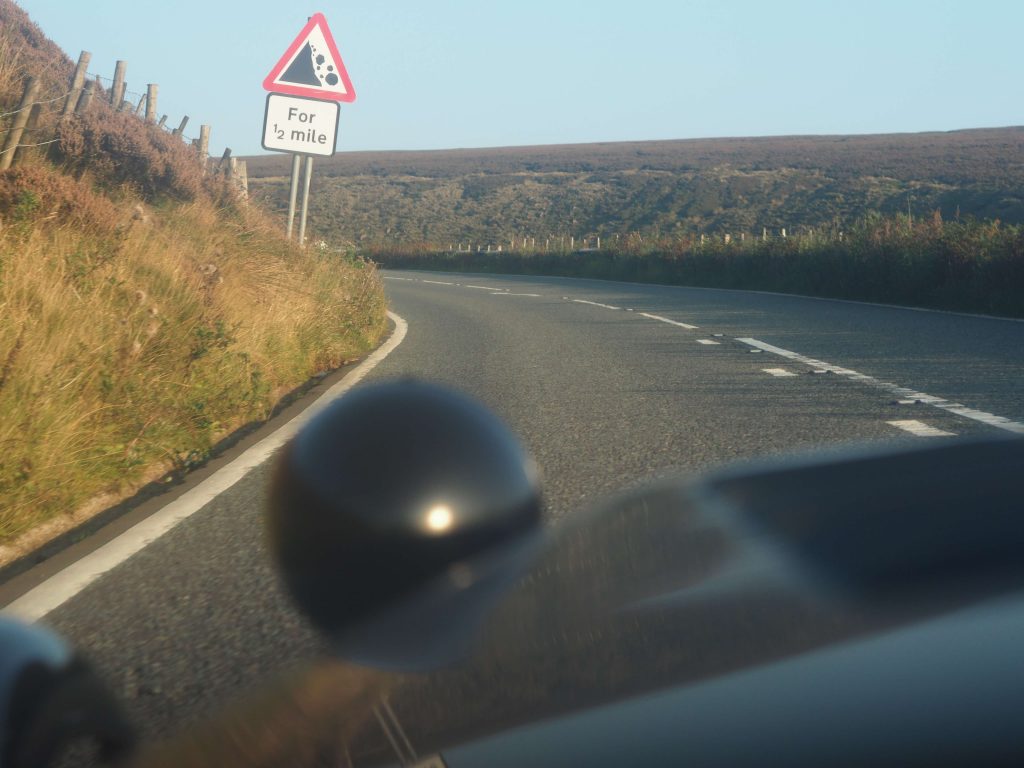
The pass runs from Glossop to the Ladybower reservoir and, once again, the local authorities have clamped down, introducing a 50mph limit. Which means once again, we’re glad to be in the Seven, our senses heightened as we fly through the beautiful Peak District. With 25 per cent gradients Snake Pass can be a real test of brakes, but the Caterham is so featherweight it never struggles to slow, even on the steepest sections, while also making light work of the climbs.
Another night under canvas beckons, and COVID-19 restrictions limit our dinner choices to a sorry looking sandwich, but nothing can spoil a truly excellent day that’s added another 320 miles to the odometer and many smiles to our faces.
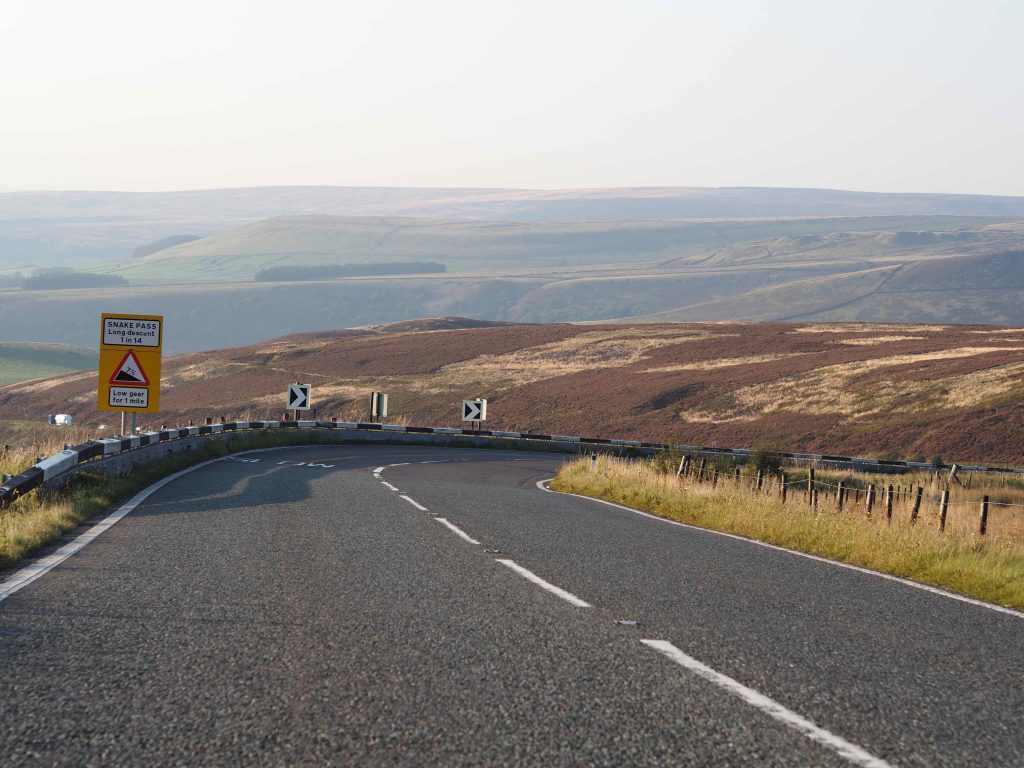
In the morning the skies are still clear and we make the two-hour journey towards the Yorkshire Dales with the roof still down. For some reason this is the only part of the trip where I just don’t gel with the car. The buffeting is exhausting, I can’t settle in my seat and so I’m very pleased to make it to Hawes and the beginning of the Buttertubs Pass.
Buttertubs Pass
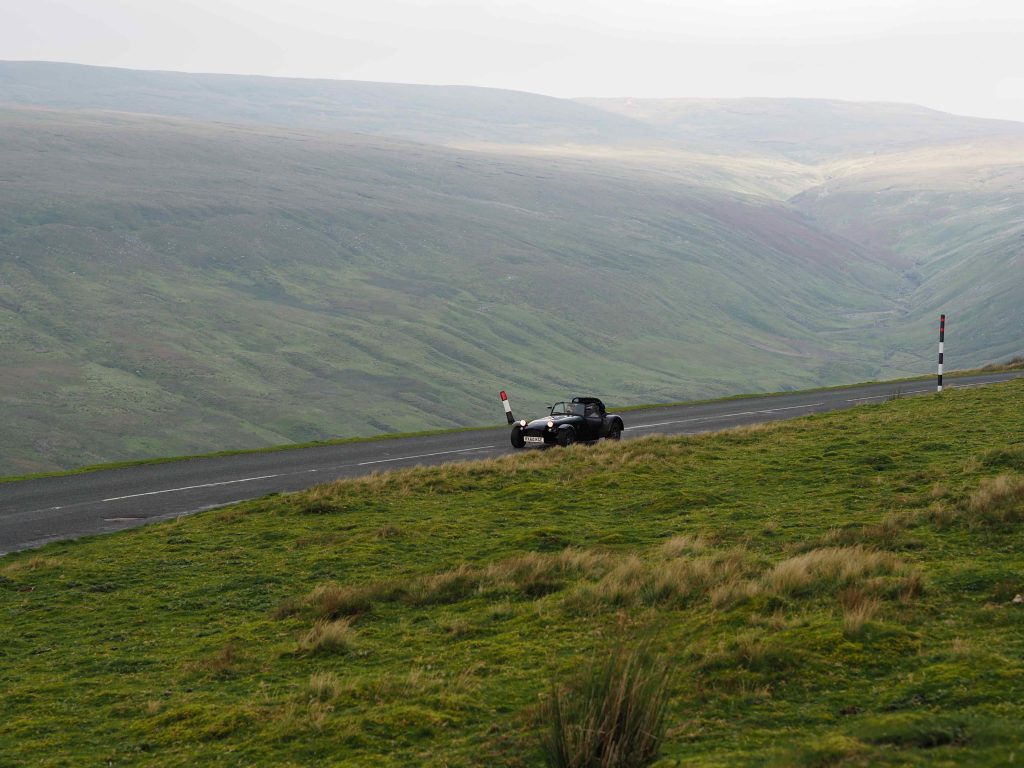
This is another road popular with Top Gear alumni. In this case Jeremy Clarkson who described the pass as “England’s only truly spectacular road.” He is not wrong. It really is spectacular – and surprising. Initially you climb up onto the Dales, Cliff Gate Road (as it is officially designated) meandering gently out of Hawes, giving plenty of time to soak in the scenery. Then, out of nowhere, it becomes an insane roller-coaster ride, dipping and climbing, dodging and weaving, forcing concentration, with only a few scarred cable barriers preventing low flying becoming high flying.
It’s an astonishing drive, and Max does brilliantly. I’m a terrible passenger at the best of times, but he’s really focused, smoothly, calmly tackling the ‘Tubs, blipping for downshifts and keeping his eyes up for the next surprising twist.
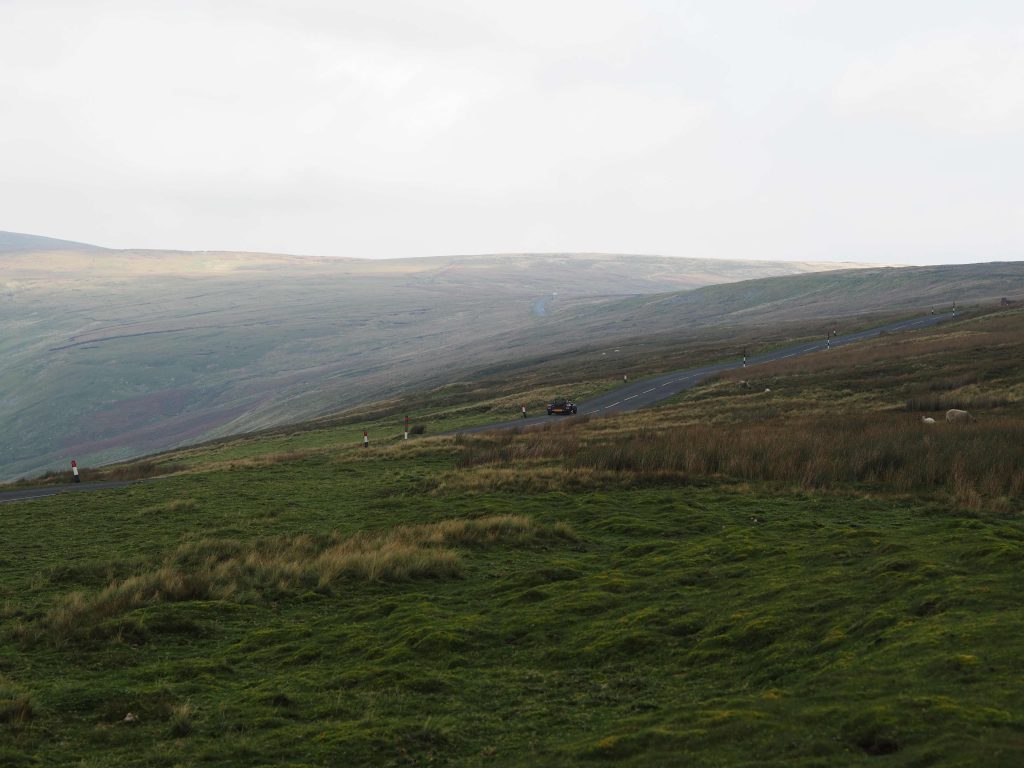
By now we’ve dipped into Cumbria, and that means the Lake District, a scant 50 miles to the Kirkstone Pass, which was to be our fifth road. But when we arrive there is nothing to see. The fog is so thick that even if we weren’t stuck behind a bus, we could go no faster. Our campsite is handily placed just at the bottom of the pass so we can try again in the morning.
We pitch our tents in the mizzle, with 220 further miles on the clock, but overnight that turns into a massive storm. Max’s tent leaks, soaking most of his clothes – and most, importantly, his narrow driving shoes. Today we will be sharing footwear as the pedal-spacing and tiny footwell of the Seven doesn’t accommodate anything but the slimmest of shoes.
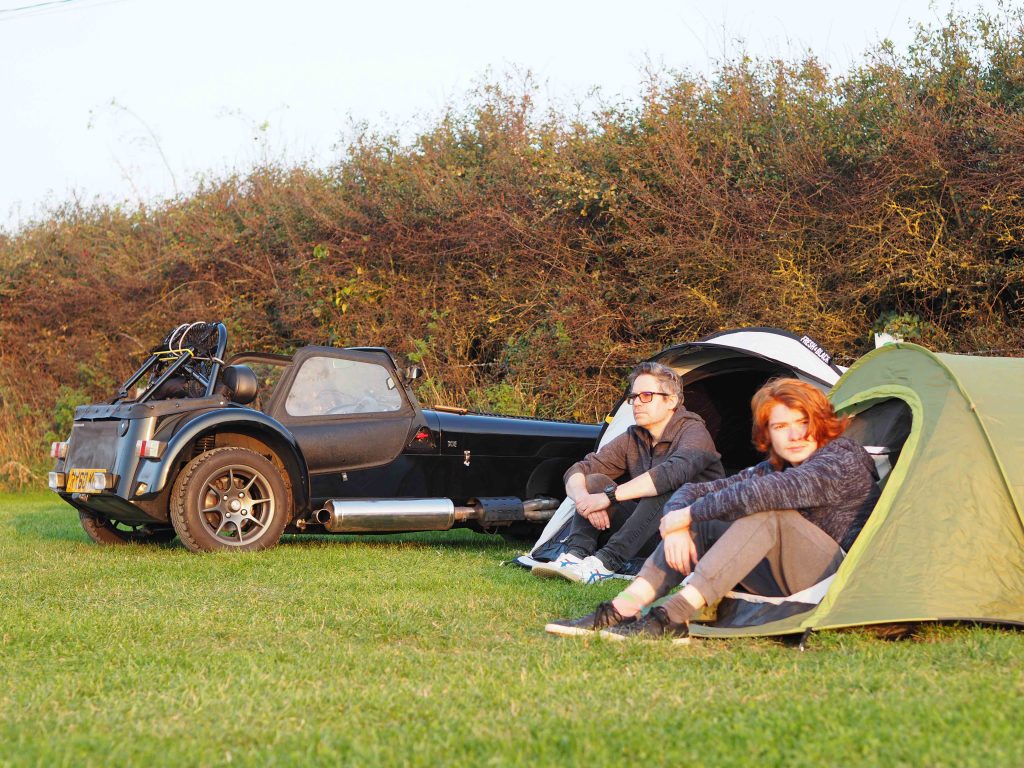
Added to that, the foul weather simply will not yield and we have to rule out another attempt at the Kirkstone Pass. Instead, we point our rain-drenched noses to the west and seek out the Honister Pass.
Honister Pass
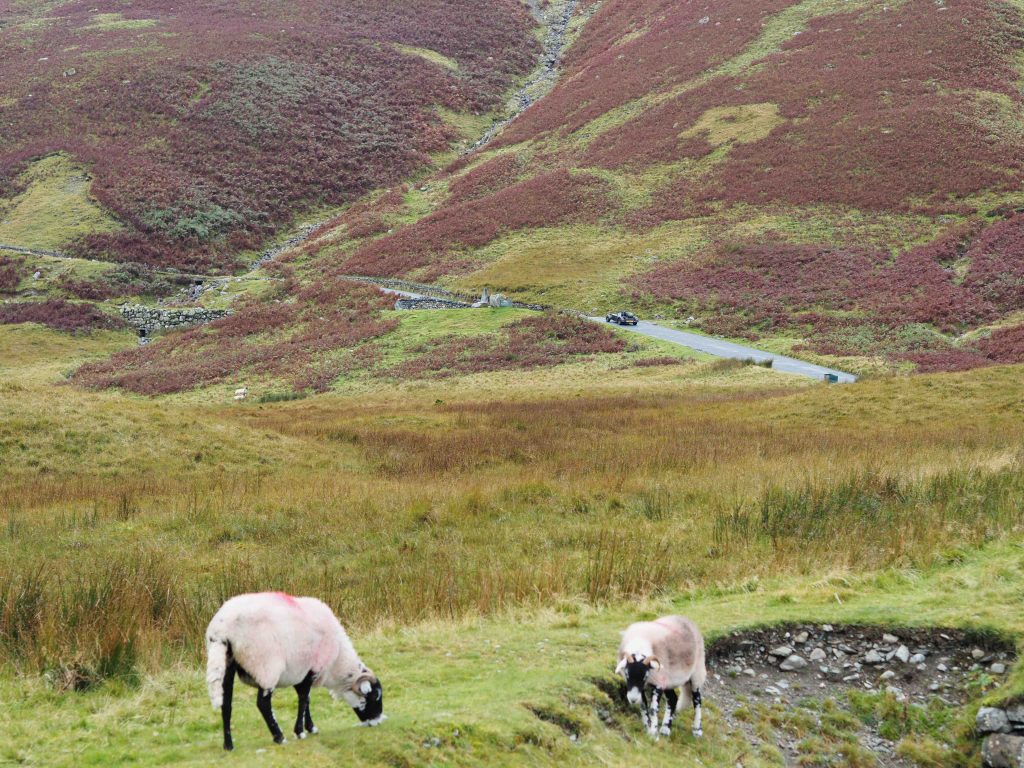
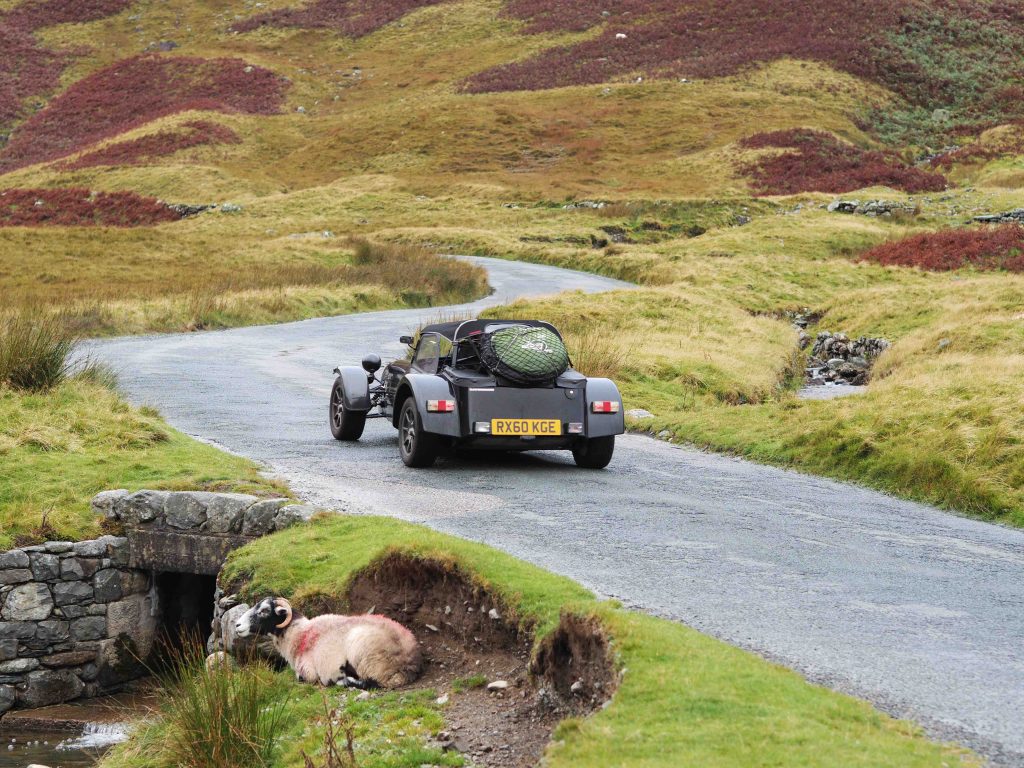
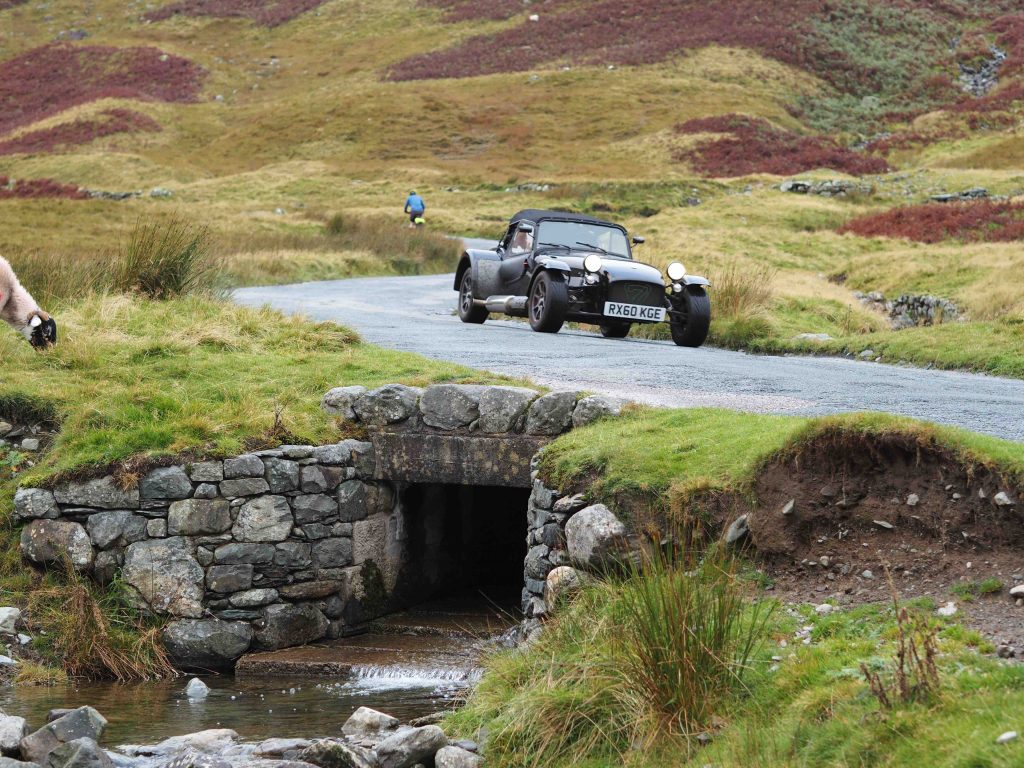
The eclectic topography of the Lake District means the climate is very localised, and by the time we reach the town of Keswick the air is completely clear. The B5289 Honister Pass begins in Gatesgarth with a very steep, narrow, tortuous climb and we’re glad to be in a car as diminutive as the Seven. Then it opens up to a valley full of locals who think they own the road. Sheep stroll casually onto the asphalt, unbothered by the need for drivers to suddenly shed speed. They give you a little side-eye and slowly wander off, while your heart rate is still recovering from a massive panic stop.
So caution is required, but it’s still a corking drive and as we finally begin to dry out, we’re hoping for even better to come.
As we slog up the M6 and into Scotland the clues are already there. This must be the most beautiful stretch of motorway in Britain, cutting through the mountains on the border. It’s significantly colder now and because our Seven has no heater, we keep the half-hood in place, put on more layers and make the most of warmth that finds its way from the exhaust to the footwells.
The hood keeps some heat in, but does nothing to deaden the unrelenting noise at highway speeds. Yet, despite the impossibility of conversation I feel closer to my son than I have for a while. Obviously, we are close, the car’s dimensions see to that, but I feel the bond of an experience shared. I glance over occasionally and catch him smiling. Just being in this car together is good for the soul.
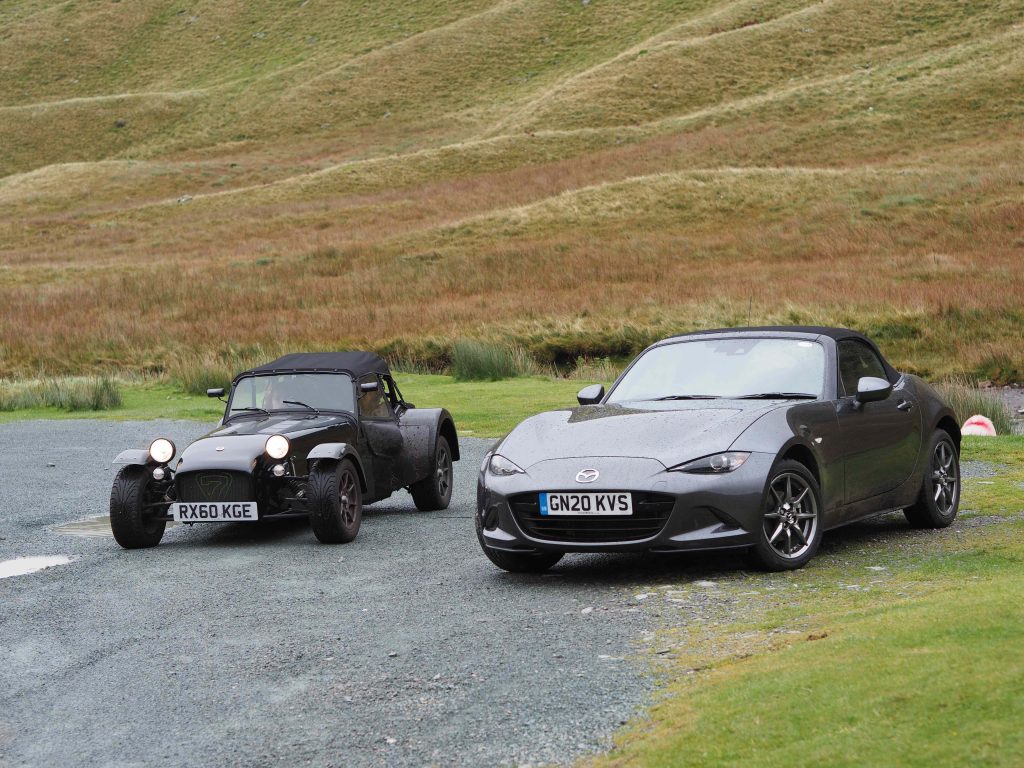
We camp near Loch Lomond with 200 further miles ticked off. It’s our first real chance to stretch our legs in days and walk into the little hamlet of Drymen for a warming pub dinner, where discuss the pros and cons of the Caterham experience. We agree that on paper the impracticalities and discomfort outnumber the advantages of performance and handling, but on the right road – or track – we can’t imagine another car that would offer such a pure, visceral thrill.
A82 to Glencoe
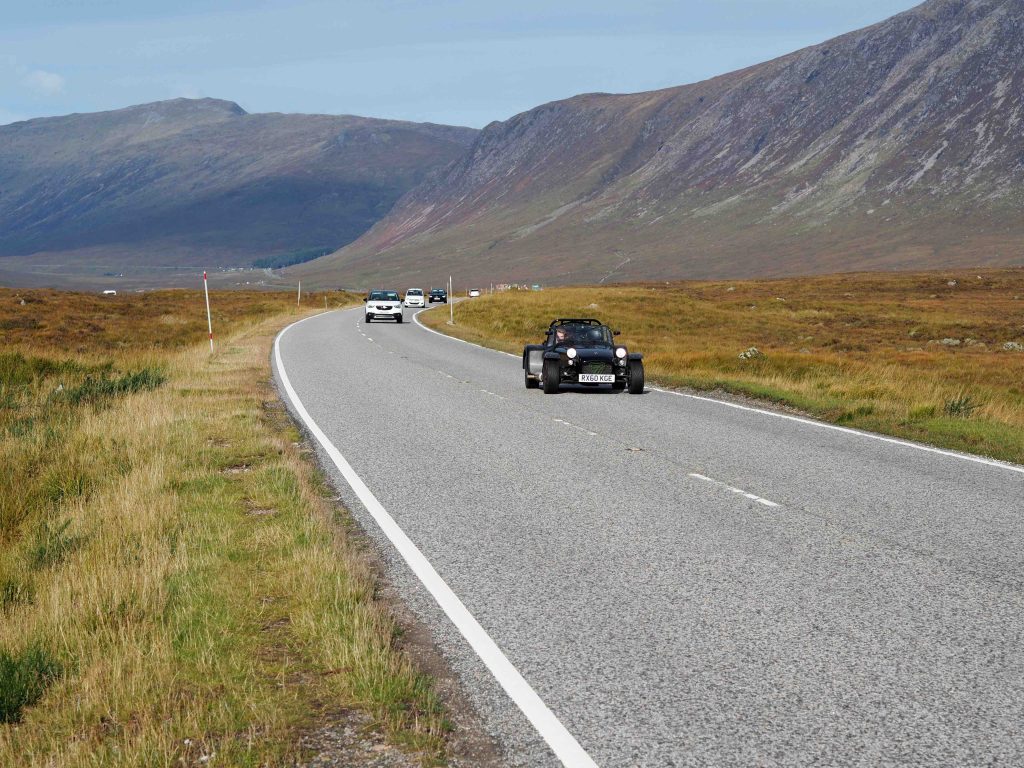
When we wake there’s frost on the tents and the car, but thankfully it’s dry as we pack up and find the sixth road on our list of Britain’s best roads, the A82 to Glencoe. For miles we hug the banks of Loch Lomond, snaking along trying so hard not be hindered by the stunning vistas grabbed between trees. It’s a beautiful drive and the 50mph limit is plenty given the amount of water still on the road, the chill in the air and the rubber compound of the Avon CR500s which really doesn’t work until it heats up. Wheelspin in third gear is a wake-up call this early in the morning.
Leaving the lochs behind the A82 eases out with long straights where two or more cars can be dispatched with a downshift and a dose of full throttle. There are others with the same idea and we’re buzzed by a Hyundai i30N and an A45 AMG which pop and bang rather artificially, unlike the Seven’s sidepipe with its authentic acoustics.
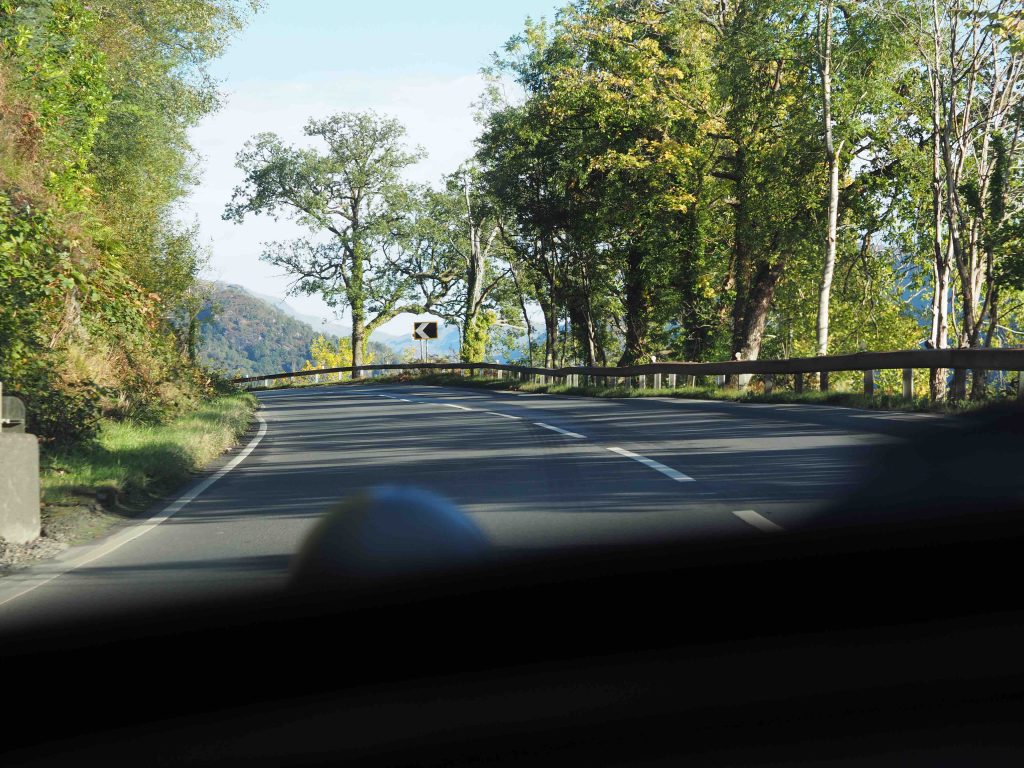
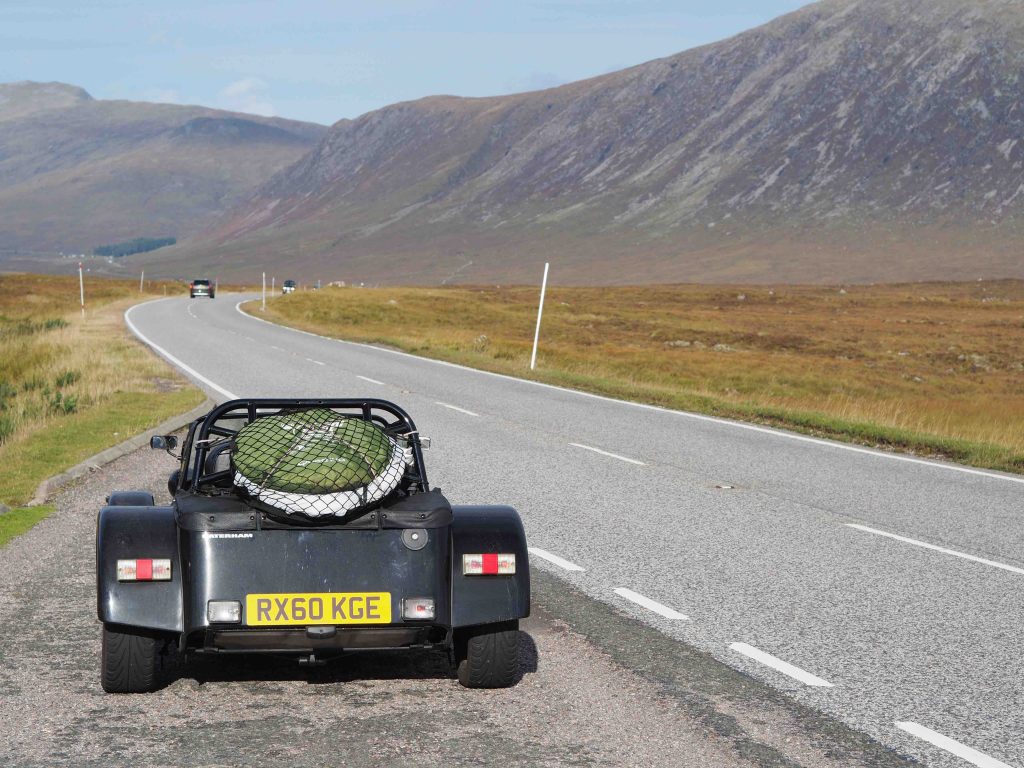
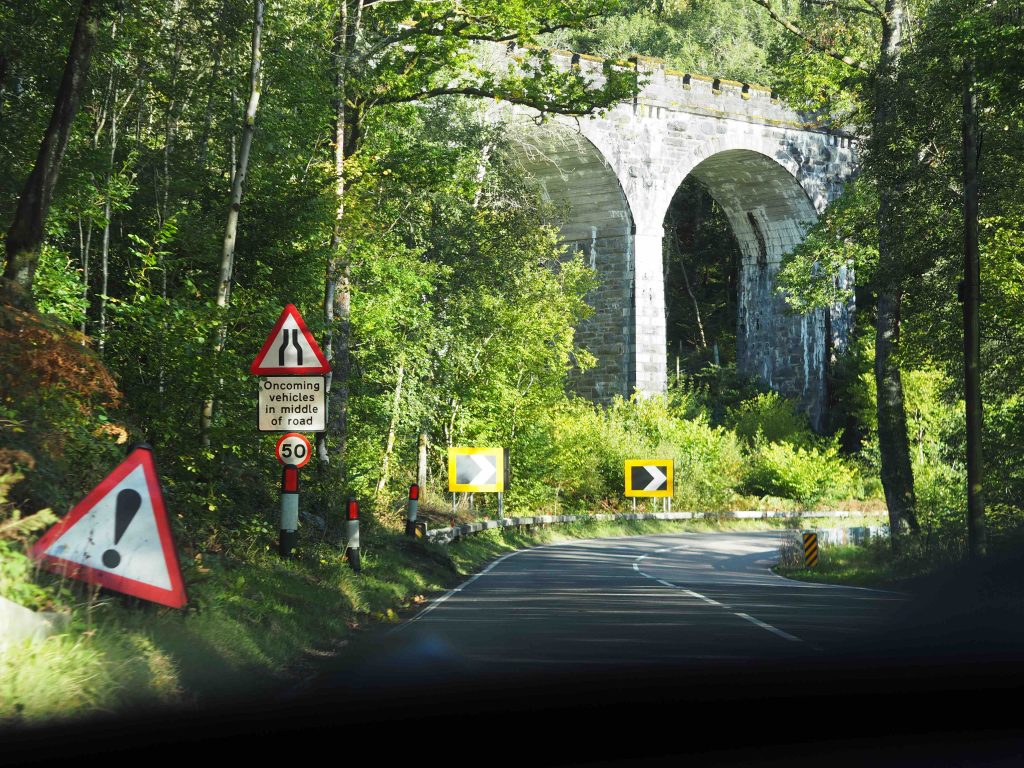
Nearing Glencoe we enter a valley of such scale and spectacle that it appears pre-packaged for Instagram – no filter required. The road itself is fast and varied, so entertains almost as much as Mother Nature.
Applecross Pass
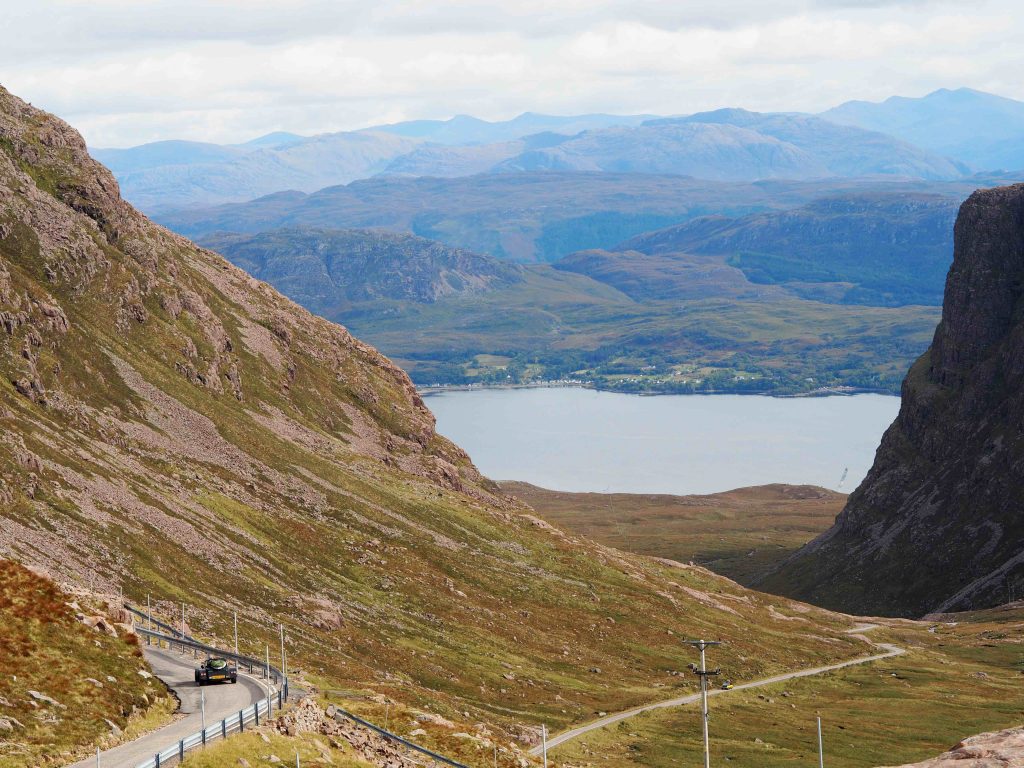
The Applecross Pass from Tornapress to Applecross, or Balach na Ba as the locals call it, is our ultimate destination. It’s also everyone else’s, it seems. This crazily narrow, bumpy and twisty climb was once a sheep drovers’ road and frankly hasn’t been upgraded much since. It is a constant stop/start, a race between passing places to get to the top. But when we get there it’s worth it. The view down the pass and across to the islands of Raasay and Skye beyond are the most mesmerising we have seen so far.
I send Max off for some final photos. The road, the car and even the weather all come together for the perfect shot, but we are both a bit frustrated at having covered 1400 miles and potentially leaving Scotland after a last drive that’s been photo-friendly but not driver-friendly. Max looks frazzled by the effort. “Well, that was certainly an experience,” he muses.
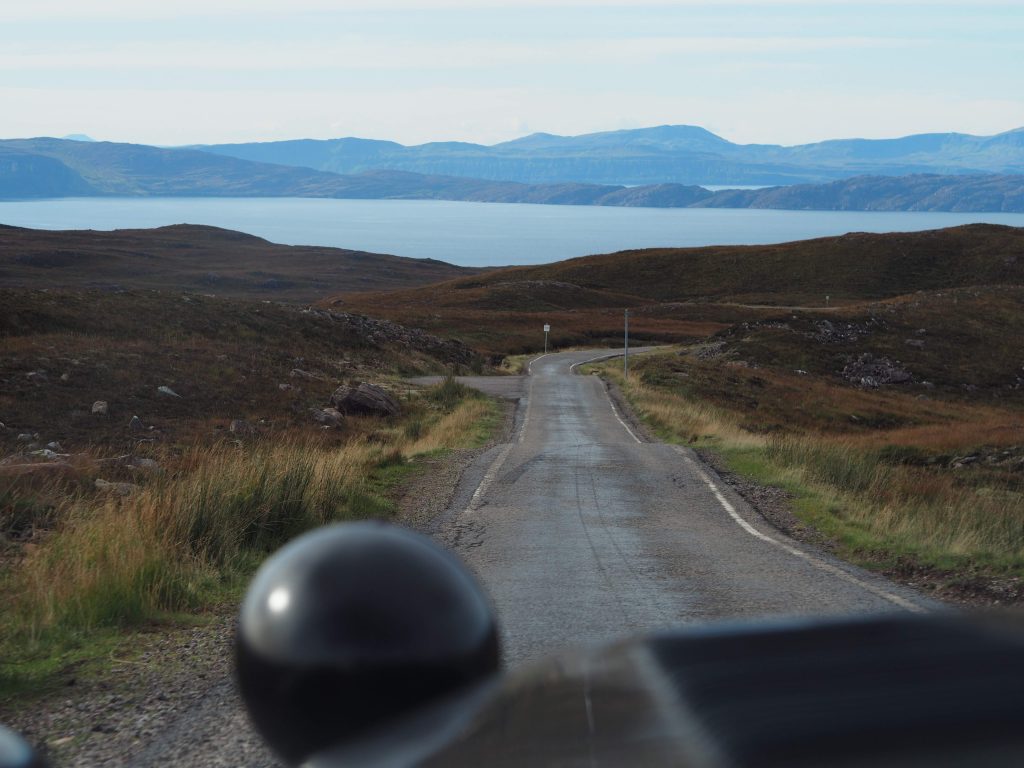
That night storm clouds gather and by five in the morning our tents are being battered by wind and rain. It’s impossible to sleep, so we catch the shortest break in the tempest and pack up. The sun is just rising through the mist as we reach the Applecross Pass again.
It is ours and ours alone. We see not a single car as we charge through its 11 miles in a fraction of the time it took the day before. Just the two of us and our Seven, the most minimal, most engaging motor car on one of the seven best roads in Britain.









